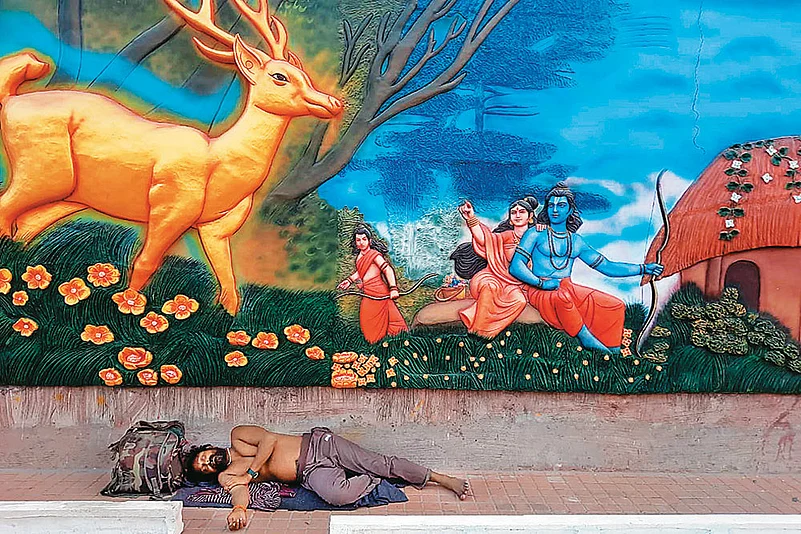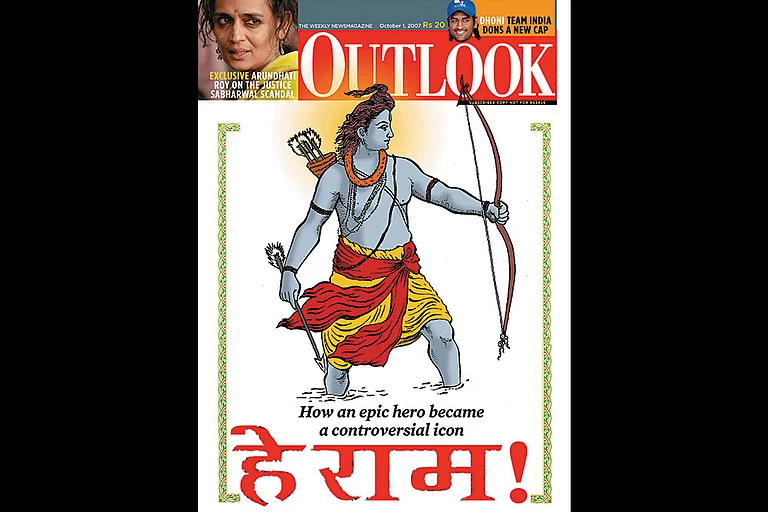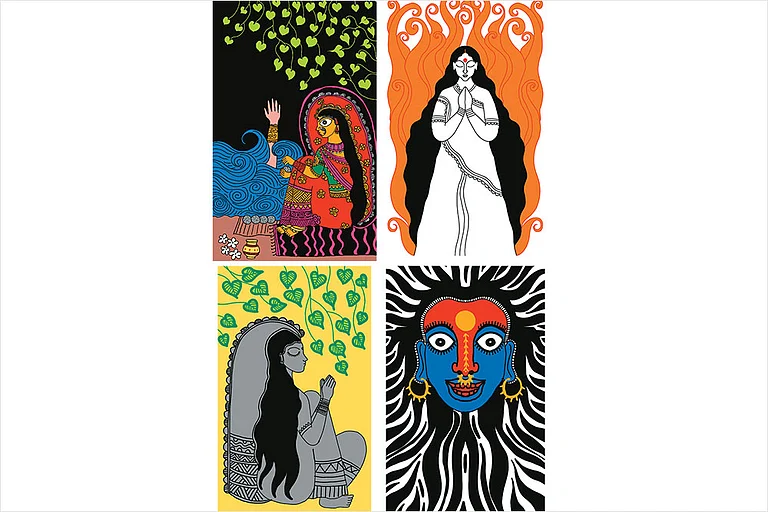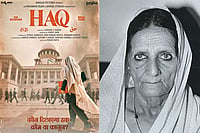My Ram is in my Heart
As I stand on my toes on the cement divider of the road leading to the Ram temple and crane my neck, all I can see is a network of human conveyor belts. A stream of people going from left to right, turning at the barricade and then going right to left, to merge into the larger stream going away from me. This larger stream making a U-turn at the checkpoint further up and coming back towards me again, finally turning to disperse into the rows of X-ray machines at the main gate of the temple. As I stand there for a few minutes, this whole clockwork seems like a scene from Chaplin’s Modern Times, only the flywheels, belts, and levers are all people. Everyone with Jai Shri Ram stencilled on their foreheads and cheeks and buttons pinned on their chests saying Ram Mere Dil Me Hai. They get stamped with Ram Lalla’s darshan and come out blessed from the other end.
I have been here before. The first time was about a week after the Babri Mosque was reduced to rubble by almost bare hands. The mosque structure in its weather-beaten grey-black ancientness had looked formidable in photos. It was surprising it yielded so easily. But then what monument can stand in the way of men and women of ferocious zeal? So I was here all those years ago as a cub reporter for a Sunday magazine, along with other seniors, starting my journalistic journey. The security had made a narrow path around the heap of debris for media persons to pass through. We, the reporters, climbed on top of the rubble, helping each other like trekkers do on a tricky bend. Standing on the road divider now, I can still recall a sense of numbness I felt when I was on top of that rubble. Other memories come flooding, all that hatred and the bloodshed, the screams and the war cries. The wave of humanity was shoving me, urging me to move on, to go to the main temple gate. But I freeze; I am not able to move. I sit there outside under a peepal tree, and then turn back. Those buttons are right: my Ram is in my heart.
Lost and Found
Ayodhya is a city of lost people—quite literally. There are continuous announcements on the PA system all around the Ram Dham about mama, mami, chacha, chachi, bhanja, bhanji, wives, husbands, friends, neighbours, and travel companions, desperately trying to reunite. But there are some chilling announcements: “Six-year-old Manoj and his three-year-old sister Veena, wherever you, are come to the Lata Mangeshkar chowk police helpline kiosk.” Can Manoj and Veena hear this announcement in the chaos, can they comprehend? Will they find their family? Suddenly, a wailing mother pleads in Telugu in the loudspeakers. “We all came from Warangal to see the Ram temple. I have been separated from my children and my husband. Please, please come to the Ram temple entrance, I have been waiting there, I am feeling very scared…” she trails off. Then there is this: “Hello, I am Kamala chachi speaking. Manju, Babita, Rajiv, Vijay and Chunnu, I have been looking for all of you for the last two hours, my phone is dying. If you don’t contact me in the next 10 minutes, I am taking the four o’clock bus back home to Lucknow.” Does anyone come back to say their loved ones have been found? “Sometimes; most of them do find each other,” says the lady at the helpline kiosk, hot and bothered.
Spirituality in Dolby Sound
For many devotees, the trip to Ayodhya is also a vacation. It’s not like the sombre gathering of the devout in Mecca or the Vatican. Here, the Lata Mangeshkar chowk and the Saryu riverfront are like fairgrounds in the evenings. People are having chaat, kids run with candy floss sticks, there is haggling over clothes, someone is blowing soap bubbles, children bump each other on miniature battery cars, fluorescent rockets shoot up in the sky, kachori-samosa and sweet shops are brimming over, there is marijuana in the air. The most popular hangout spot, the Saryu riverfront, is not on the actual river, which is apparently too polluted to take a dip, but a man-made tributary with ankle-length water. The floor is concrete with some sand and pebbles on the banks to give it a real river feel. There is a gigantic screen where Ramanand Sagar’s Ramayan is played on a loop in the evenings. On the opposite side, Ram and Shiva bhajans sound like rave songs. In Ayodhya, spirituality comes in Dolby sound.
MORE FROM THIS ISSUE
Satish Padmanabhan is Managing Editor, Outlook
This appeared in the print as 'Ayodhya Diary'


































